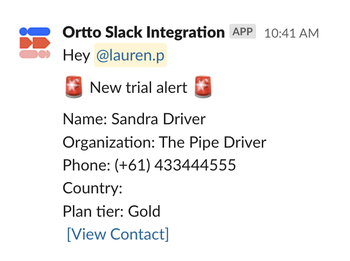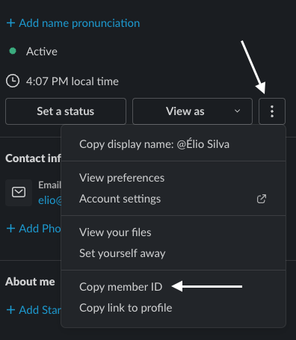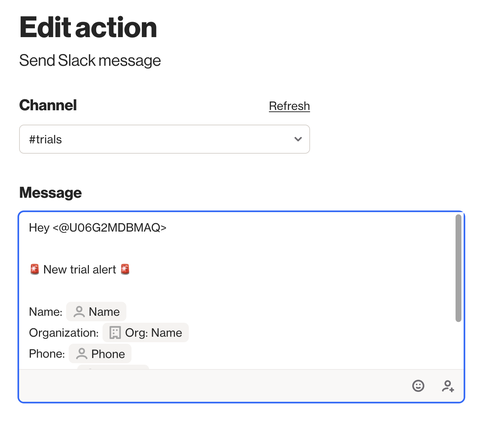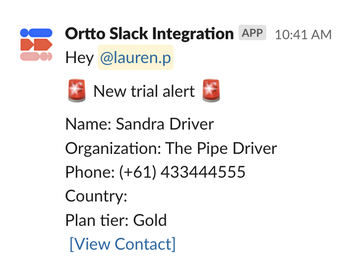How to format a Slack message
When setting up a Slack action in a journey or playbook, you can add merge tags, emojis and mentions to create personalized messages. This page shows you how.
Add merge tags and emojis
You can add merge tags and emojis to the Slack message so it contains helpful and relevant information about a contact. Here’s an example for a new trial notification:

And here’s how that message looks in Slack. Note that it contains a link to View contact, which takes you to the contact’s view in Ortto.

TIP: To put the View contact link on a new line, add an blank line at the end of your Slack message when setting it up.
Mention a team member
You can mention members of your workspace when creating the message in Ortto.
To do so, in Slack, view the profile of the member you want to mention. On their profile, click the … (more menu), then Copy member ID.

In Ortto, at your Slack message configuration, insert the member ID and add "<@ >", for example: <@A12B3CDEFGH>

Here’s how that message looks in Slack.

Apply visual styling
You can apply visual styling to your Slack messages using a markup language called mrkdwn
_your text_ will produce italicized text
*your text* will produce bold text
~your text~ will produce strikethrough text
Example:

And here’s how that message looks in Slack.

Add links
To link to a URL in a Slack message, include the URL directly in the message text and it will be auto-transformed by Slack into a link. You can also use a merge tag to populate a URL.

And here’s how that message looks in Slack.

To adjust the text that appears as the link from the URL to something else use the following:
<http://www.example.com|Your link text here>This can also be used in conjunction with a merge tag.
And here’s how that message looks in Slack.


